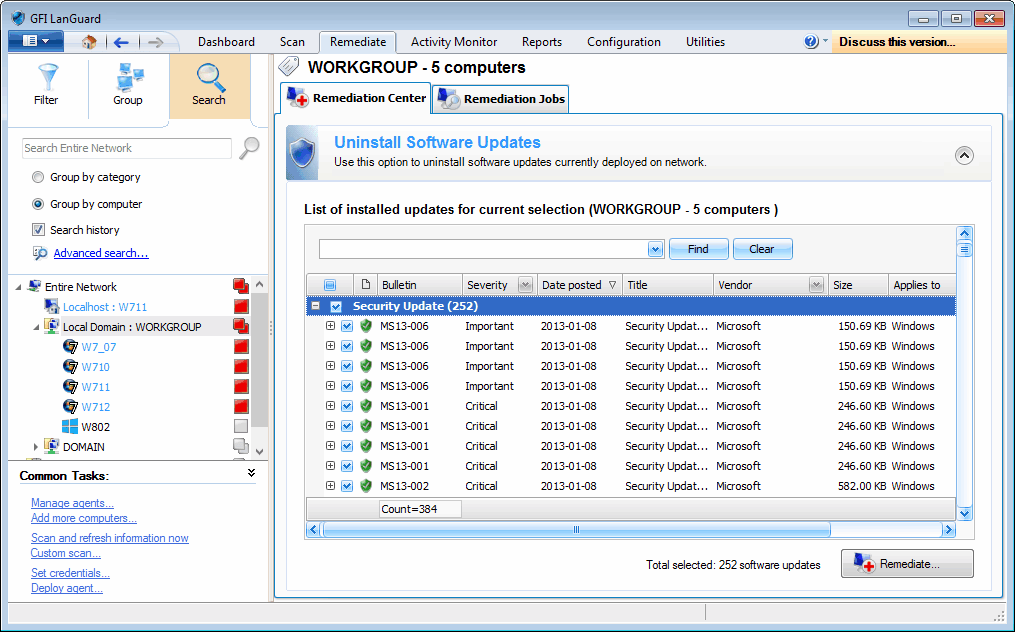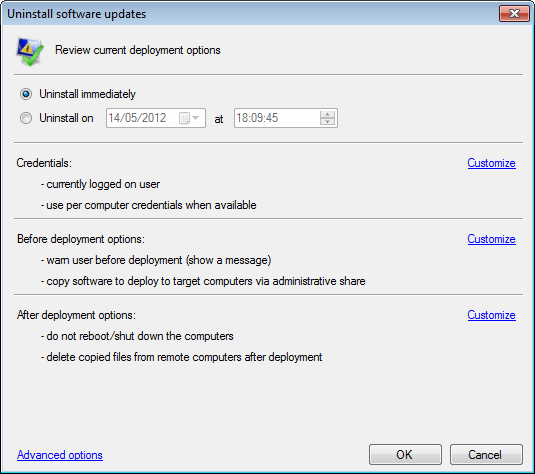Uninstalling Software Updates
The Uninstall Software Updates feature enables you to manually remove:
- Installed Service Packs and Update Rollups
- Installed Security Updates
- Installed Non-Security Updates.
To manually uninstall software updates:
1. Launch GFI LanGuard.
2. Click Remediate tab and expand Uninstall Software Updates.

Uninstalling software updates
3. From the computer tree, select the computer/group where to uninstall software updates.
4. From the List of installed updates, select the updates you want to uninstall.
NOTE
Use the search bar to look for specific installed updates or use the filtering options for each column heading to view the required data only.
5. Click Remediate.

Uninstall software updates options
6. The Uninstall software updates dialog, enables you to edit uninstall options before starting the uninstall operation. Review the options described below:
| Option | Description |
|---|---|
| Uninstall immediately | Selected by default. Leave selected if you want to uninstall updates immediately. |
| uninstall on | Specify a date and time for when updates are uninstalled. |
| Credentials | Provides you with the credentials settings that are used to uninstall updates. Click Customize to change settings and use alternate credentials. |
| Before deployment options | Provides you with the actions taken before uninstalling software updates. Click Customize to edit the before deployment message, and shares mode used to transfer updates. |
| After deployment options | Provides you with the actions taken after uninstalling software updates. Click Customize to configure whether the computer(s) reboot, shutdown or display a message to the end-user. |
| Advanced options |
Click Advanced options to configure the:
Select Remember settings to reuse them when running the next deployment operation. For more information refer to Configuring auto-remediation options. |
7. Click OK to start uninstalling the selected updates. You are automatically taken to the Remediation Jobs tab where you can monitor the progress of the uninstall operation.